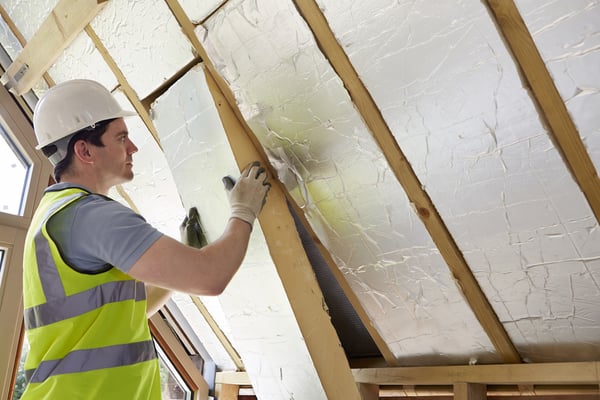3 Design Features to Keep a Building Warm During a Winter Storm

The US was hit by a major winter storm on February 13, causing freezing temperatures and blackouts in large portions of the country. While these storms are not a threat to the structural integrity of buildings, they can create dangerous conditions for occupants:
- Space heating systems must work at full capacity, to deal with freezing temperatures that may last several days.
- Extended blackouts can disable heating systems, causing the indoor temperature of buildings to drop rapidly.
Even if a building uses space heating systems fired by oil or natural gas, they depend on air handlers or hydronic pumps to distribute the heating effect. This equipment is disabled during an extended blackout, leaving indoor spaces without heating. In high-rise constructions that rely on a water booster pump, a blackout will also interrupt the water supply.
Get a resilient MEP design for your next building project, and keep occupants safe during extreme weather.
In this blog post, we will discuss three design features that help buildings stay warm during a major winter storm, like the one that struck on February 13. Ideally, a building should minimize heat loss, while having a backup power source that is reliable during extended blackouts. Ensuring a hot water supply is also important when occupants must stay indoors for many days.
1) Having a Well-Insulated and Airtight Building Envelope

A building needs a heating system that delivers enough BTUs to keep an adequate temperature, but keeping the heat inside is equally important. If a building has deficient insulation and too many air leaks, the indoor temperature can get very low in a few hours without heating. The latest winter storm has left large areas without electricity for several days, and buildings without backup power for their HVAC systems can get very cold.
When a building has an airtight envelope and insulation with a high R-value, it can keep the heat inside more effectively. When a space heating system cannot operate reliably, the best option is to conserve the heat already available. For example, a roof with R-20 insulation releases heat twice as fast compared with an R-40 roof.
New constructions provide an excellent opportunity to design and build a high-performance envelope. However, there are also many ways to improve insulation and airtightness in existing buildings. Energy consultants can detect heat loss issues with methods like thermal imaging and blower door tests.
2) Having a Natural Gas Generator

Emergency generators for buildings normally use a diesel engine. However, an extended blackout can deplete the fuel tank, and deliveries can be interrupted during a severe winter storm. Unless a building has easy access to diesel, it cannot rely on a generator for long.
Battery systems charged by solar panels are also gaining popularity as backup power sources. However, solar panels cannot produce electricity when they are covered with snow, and cleaning them during a storm is difficult and dangerous.
A natural gas generator is one of the most reliable power sources during a weather emergency, for several reasons. Natural gas is delivered as a utility service, and the piping network is sturdy and buried underground. While power grids are often knocked out by extreme weather, gas distribution systems are rarely affected.
Alternatively, you can use a natural gas fuel cell, which provides simultaneous power and heat. This is still an emerging technology, but it has already been used successfully in some buildings.
3) Having a Hot Water Recirculation System

Cold weather can freeze water inside pipes, making circulation impossible. This is a serious problem when building occupants are staying indoors during a winter storm since they are left without a water supply. Also, keep in mind that water expands when it freezes, and it can burst pipes and plumbing fixtures.
A hot water recirculation system prevents freezing, and this ensures that the water supply will stay available for occupants. In addition, there is no need to wait for hot water when opening a faucet or shower. However, a recirculation system needs good insulation for pipes, or otherwise, it can consume plenty of energy.
Conclusion
Winter storms often cause extended blackouts, and this is a problem when people are sheltering themselves in buildings. A blackout disables HVAC systems, and a poorly insulated building can lose heat very fast. The low temperature can also cause freezing inside pipes, damaging the plumbing system and interrupting the water supply.
A building can become resilient against extreme winter weather by having a high insulation R-value, an airtight envelope, a natural generator, and a hot water recirculation system. These design features will ensure that indoor spaces and water supplies have a suitable temperature while the winter storm lasts.

Anuj Srivastava
Anuj Srivastava is a principal partner at NY Engineers. He is known for his MEP franchise market knowledge. Anuj is currently leading a team of 100+ MEP/FP engineers and has successfully led over 1500 franchise projects in the US.
Join 15,000+ Fellow Architects and Contractors
Get expert engineering tips straight to your inbox. Subscribe to the NY Engineers Blog below.

